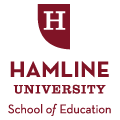Term
Fall 2018
Capstone
Capstone Project
Degree Name
MAED: NSEE
Facilitator(s)
Susan Manikowski and Vivian Johnson
Content Expert
Amanda Flannery
Abstract
Zoos and aquariums have an attendance of 50 million children visitors every year with 12 million of those being student learners on field trips (Association of Zoos and Aquariums, 2018, Annual Survey Results, Informal Science Education). According to Willis, Weiser, and Kirkwood, (2014) field trips are not just a ‘day off’ from school, they serve to provide enriching experiences that help students to explore the world outside of their direct environment. To ensure that learning is happening before, during, and after the field trip takes preparation on part of the teacher. Anderson, et al. (2006) state that students should be prepared by the curriculum, participate actively during the trip, and information gained during the experience should be reinforced following the field trip. In addition, Bitgood (1989) has found that a successful visit is more likely when teachers know the content of the lesson, know how to assist museum staff, and are informed about the details of the agenda of the trip. To support teachers in the planning aspect of a field trip to a zoo this capstone explores the question how can an interactive website help teachers plan a more effective field trip to the zoo? The purpose of this website is to support already busy teachers by creating a one-stop-shop website to support them in creating pre-, post-, and activities to complete during the trip. The website will also have a contact page for teachers to leave feedback for future updates. A second purpose of the website is to be a virtual space for schools or students without the opportunity to take field trips.
Project Type
Website Creation
Keywords
Science, Teachers/ Teaching, Technology
Recommended Citation
Hardcastle, Jamie L., "Preparing Teachers for Their Zoo Trip With an Interactive Website" (2018). School of Education and Leadership Student Capstone Projects. 281.
https://digitalcommons.hamline.edu/hse_cp/281
dc_type
text
dc_publisher
DigitalCommons@Hamline
dc_format
application/pdf
dc_source
School of Education Student Capstone Projects

